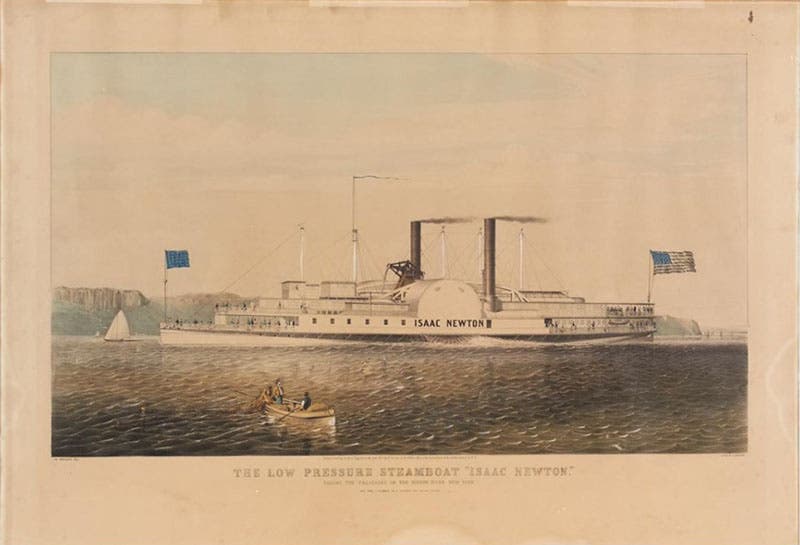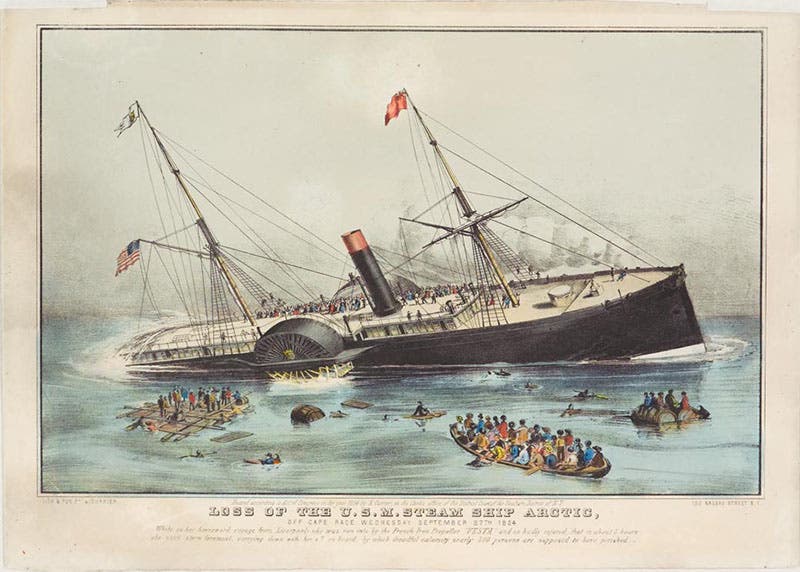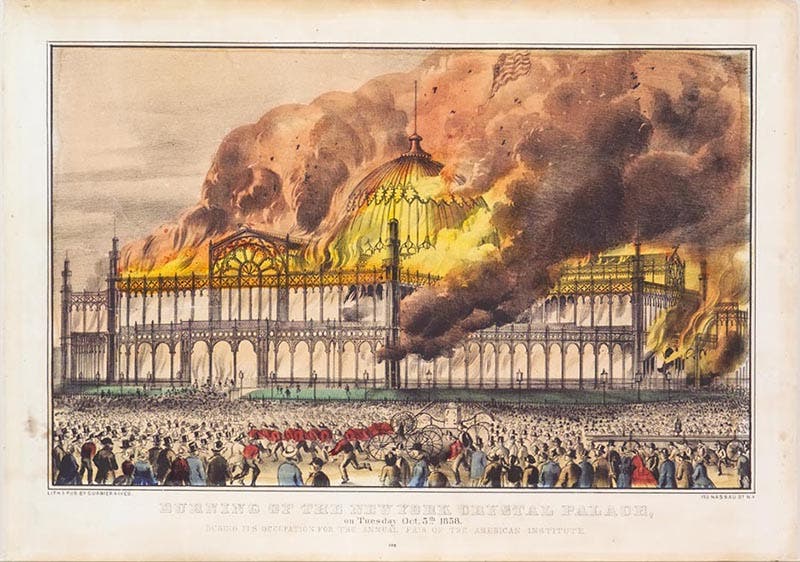Scientist of the Day - Nathaniel Currier
Nathaniel Currier, an American lithographer, was born May 27, 1813. Currier learned the art and craft of lithography in Boston and Philadelphia, then moved to New York and started issuing prints. He soon found a business partner in James Ives, and the firm of Currier & Ives churned out lithographs of Americana for 23 years. Most of the lithographs captured American scenery or historic events and people, but many of them represented technological achievements. We did a piece on Currier on his birthday two years ago and showed five of his prints, depicting the Brooklyn Bridge, the Niagara Falls Bridge, the High Bridge of Harlem, a steam locomotive with train, and the massive steamship Great Eastern. You can see that essay, and those lithographs, here. We did not exactly empty the well with that effort. So we thought that we would re-express our historical gratitude to Mr. Currier by showing six more of his lithographs that showcased American technology. For example, three years ago we wrote about John Ericsson, who invented and built the USS Monitor, which engaged the ironclad Merrimac in an epic Civil War naval battle. We illustrated that account with a painting, but we could have used Currier's lithograph, which actually gives us a better view of both ships (first image).
If you like clipper ships (and who doesn't - Nathaniel Currier certainly did), there are many prints to choose from. We show here the Three Brothers, a ship that started out as the Vanderbilt, a massive merchant steamer, was outfitted with guns for a stint in the Union Navy, and then in 1873 was renamed, stripped of its machinery, and converted to a graceful clipper ship, the largest in the world at that time (second image).
Currier was also fond of steamboats, and we chose this one – how could a historian of science not choose it – the Isaac Newton, which plied the waters around New York and Long Island (third image). Currier posed it against the Palisades of the Hudson River.
If you prefer disasters, Currier & Ives had many to offer. We reproduce here the sinking of the SS Arctic off Newfoundland in 1854, which took Frederick Catherwood, one of the discoverers of the Mayan civilization, to Davy Jones' locker, along with hundreds of other poor souls (fourth image). Our other specimen in this genre captured the burning of America's answer to the Crystal Palace Exhibition of London, the New York Crystal Palace, which was consumed by flames in 1858 (fifth image).
All of the Currier & Ives colored lithographic prints – at least the ones shown here - were colored by hand; chromolithography had been invented and was in wide use in the 1860s, but Currier did not adopt it. So we thought, for our last image, we would show you an uncolored print (sixth image). Not only can one better appreciate Currier's lithographic skill when color is absent, but the focus on technological innovation makes it one of the most interesting of all of Currier’s designs for the historian of technology. It shows, all in one print, the steam printing press, the locomotive, the steamboat, and, front and center, the electric telegraph. Currier titled it, appropriately, The Progress of the Century.
Our thanks go to the Springfield Museums of Springfield, Mass., which has a large collection of original Currier & Ives lithographs and generously makes them available on their website. Dr. William B. Ashworth, Jr., Consultant for the History of Science, Linda Hall Library and Associate Professor, Department of History, University of Missouri-Kansas City. Comments or corrections are welcome; please direct to ashworthw@umkc.edu.











